Even though Bettas do best in smaller tanks, they still rely on aquatic plants to help provide stable and healthy water chemistry. One big question rests with us. What are the best live plants for betta tanks?
Since they are also very inquisitive and playful creatures, plants provide an important diversion as well as a secure place to hide.
Let’s have a look at some of the best live plants for Betta fish tanks and see how they compare to others.
Artificial versus Live Plants for Betta Tanks
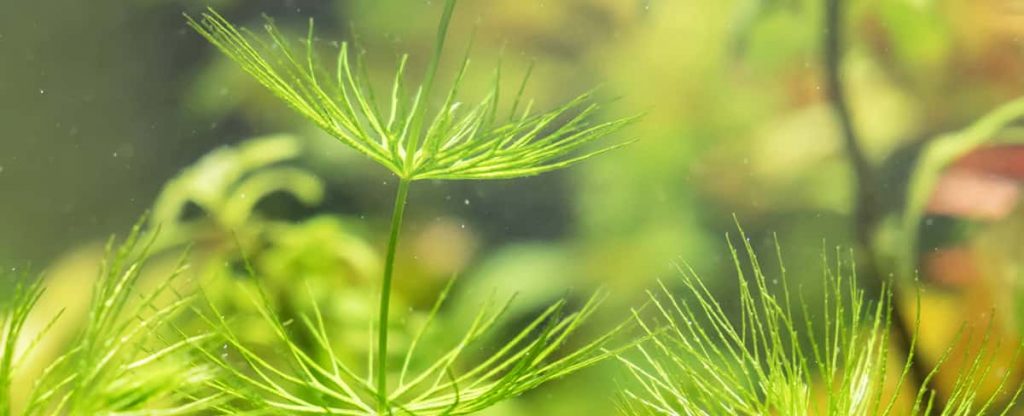
I’ll start off by saying that we always prefer live plants, but we’ll quickly walk through the pros and cons of both fake and live plants, before diving into our picks of the 10 best plants overall.
Pros and Cons of Fake Plants
Before I begin discussing live aquarium plants for Bettas, I would like to bring up a question that many people have asked me over the years.
When people see my tanks, they are often impressed by the natural habitats I create with live plants, but wonder why I don’t have any fake plants in the tank.
Author Note: While I did use fake plants very early on as an aquarium keeper, I soon found they were more harm than good. Here are the advantages and disadvantages of using fake plants in your betta tank:
Pros
- Silk plants and plastic plants come in all sizes and colors, so they will fit into any tank and theme. You can find plants in eye popping neon greens, orange, and pinks, or more natural looking plants.
- Fake plants never die back, need to be repotted, or require additional care. They will look as good decades from now as when you buy them.
- In fact, if you want to move them from one tank to another, just dip them in a sterilizing solution and add them to the new tank.
Cons
The worst thing about nylon and plastic plants is either the leaves or the base are made via a molding process that can leave very sharp edges.
These edges, in turn, can slice through a fish’s delicate slime coat and leave the fish prone to infection.
Even if you can’t see damage to the slime coat, rest assured that bacteria and fungus will exploit any weakness and cause your fish to get sick.
Fake plants do nothing to improve water conditions. Unlike live plants, they do not use nitrates or other fish waste for food. They also do not make oxygen or help remove CO2 from the tank.
Fake plants are a magnet for algae and other unsightly buildups right along with beneficial nitrifying bacteria.
When you wash fake plants to remove algae, you will also lose nitrifying bacteria and set the tank back considerably in terms of water chemistry.
Pros and Cons of Live Plants for Betta Tanks
When it comes to useful decorations, you won’t find better for your betta aquarium than live aquatic plants.
That being said, they are living things, just like the fish and other creatures in your freshwater aquarium. As such, aquatic plants require certain kinds of maintenance and care that differ from species to species.
Here are the main benefits and challenges associated with using live plants in your betta tank:
Pros
The main advantage to using live plants in any aquarium revolves around their capacity to remove nitrates from the water and substrate.
As you may be aware, nitrates are made in the final stage of the nitrifying cycle that turns ammonia excreted by fish into less harmful substances. Aquatic plants are essential for removing waste naturally from the tank.
Live plants help fish relax and give them plenty of hiding places. For fish, living in a constrained box can be very stressful simply because walls are there.
Live plants help fish relax and feel more comfortable because it makes them feel like they are in a more natural environment.
Since live plants usually need trimming on a routine basis, eliminating some of the most unsightly algae in the tank will usually revolve around simply removing leaves that have algae on them.
This will not disrupt nitrifying bacteria that colonize the plant leaves, and will also stimulate plant growth that removes even more waste from the tank.
Cons
- Real plants only come various shades of red, green, and brown. Unless you have a pond, there are very few plants that produce flowers under water.
- Some species of plant will release CO2 under certain circumstances and may suffocate the fish. Here again, good maintenance and trimming are essential.
- Depending on the type of plant, you may have to use fertilizers including CO2 injection into the tank. Fertilizers and CO2 can present problems for the fish and other species in the tank.
Top 10 Best Live Plants for Betta Tanks
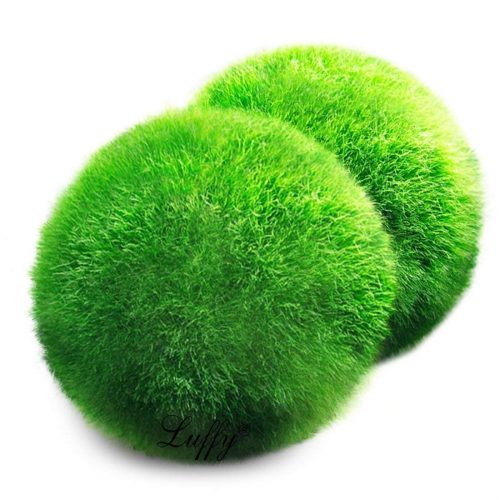
These furry looking emerald green balls are some of the most fascinating and best plants you will find for an aquarium.
They are very easy to care for, and well suited for tanks ranging between 1 to 5 gallons as well as larger tanks.
| Lighting | Medium to bright |
| Water Temperature | 72 – 82 degrees Fahrenheit |
| Hardness | All |
| pH | 6.8 – 7.5 |
| Rate of Growth | Slow to medium |
Care Needs
Marimo Moss Balls obtain nutrients as water moves around and through them. They will also float during day hours, and then sink by themselves at night.
While larger balls will usually split off into smaller ones to propagate, you may still need to turn them from time to time to ensure the entire surface of the Marimo gets adequate nutrition.
Advantages of these Live Plants for Betta Tanks
This live plant is perfect for curious Bettas that will nose them and push them along the bottom of tank. If the ball is small enough to float, you may also see the betta bat them around and play with them in other ways.
Since Marimo Moss Balls take their nutrients directly from the water, they are excellent for removing nitrates from the water column.
Final Thoughts
Marimo Moss Balls are the premier plant for Betta tanks. They don’t get very large, provide entertainment for Bettas, and also help keep the water in good condition.
>> Tap Here to Read More Reviews and See Today’s Price on Amazon.com <<
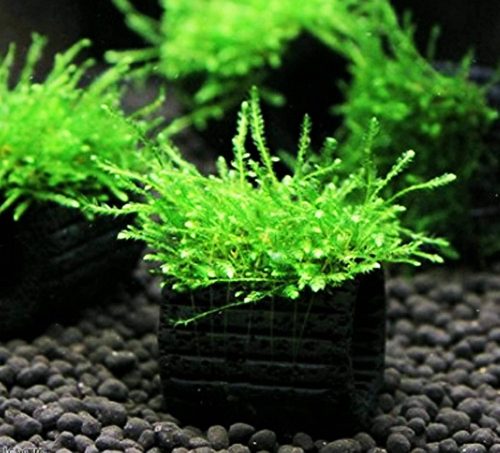
This charming emerald green colored plant, java moss, produces long, fine leaves that will move easily even in mild water currents.
It can have a slightly furry or matted appearance if you don’t trim it much. You can also use twine or string to wrap it in different shapes and trim closely for a neater appearance.
| Lighting | All |
| Water Temperature | 57 – to 86 degrees Fahrenheit |
| Hardness | All |
| pH | 6 to 8 |
| Rate of Growth | Fast |
Care Needs
Will need to be trimmed often to keep its shape. You may need to add fertilizer supplements if there aren’t enough animals in the tank to provide adequate waste.
Advantages of these Live Plants for Betta Tanks
Java Moss can be trimmed down to very small sizes and anchored to different material to make interesting shapes including walls and topiary-like trees.
It also feeds through the water column and will easily remove nitrates from the water.
Final Thoughts
This plant is very useful in betta tanks of all sizes as long as you remember to trim it on a routine basis.
In very small tanks, you may have a challenge providing enough nutrients for this plant, however this can be overcome easily enough by adding tank mates that are compatible with your betta.
>> Tap Here to Read More Reviews and See Today’s Price on Amazon.com <<
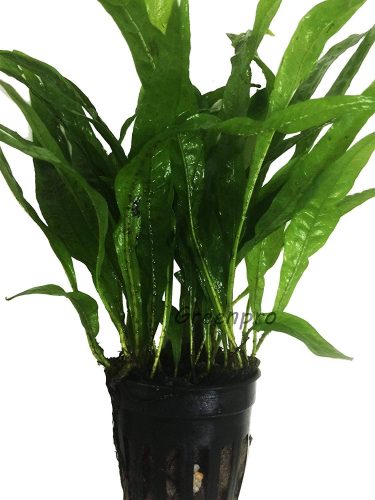
Java Fern produces tall, elongated dark green leaves that will increase in size as the leaf ages.
When trimming, try to leave 2 or 3 mature leaves and avoid removing newly emerging ones.
Depending on the plant’s rate of growth and the size of the tank, you may or may not have to remove a few mid-sized leaves during each trimming.
Never remove all the mid-sized leaves as the plant will eventually need them to help recover from trimming.
| Lighting | Low lighting to medium |
| Water Temperature | 68 – 82 degrees Fahrenheit |
| Hardness | Soft to medium |
| pH | 6.0 to 7.5 |
| Rate of Growth | Depends on light |
Care Needs for these Live Plants for Betta Tanks
This plant gets to around 8” tall at maturity, so it can overwhelm a 1 gallon tank. Trimming to keep most leaves in the 4” to 6” range will be very important in smaller tanks.
Advantages of Java ferns
Requires low light and can also grow partially submersed.
In tanks larger than 1 gallon, you can safely allow this plant to break the water surface in exchange for trimming less often.
Just remember that managing the water surface can be tricky with male bettas because they will want some leaf cover to support building bubble nests.
They will also want some open water areas where they can go up to breathe and eat.
Final Thoughts
This plant is better suited for tanks that hold 5 gallons or more. You can get it to grow successfully in smaller tanks, however it will need more nutrition to spur the kind of growth required to keep up with trimming needs.
>> Tap Here to Read More Reviews and See Today’s Price on Amazon.com <<
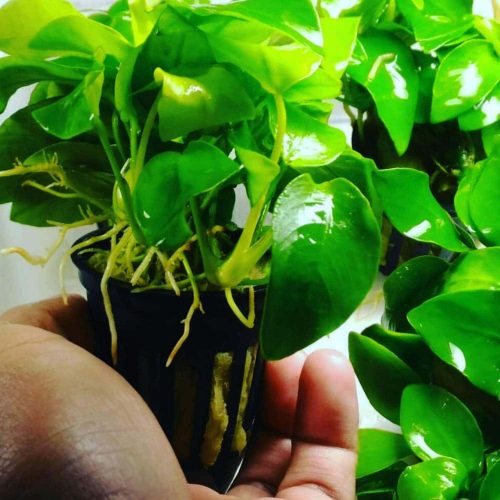
Dwarf Anubias is a favorite among several aquarium keepers because it has beautiful oval shaped green leaves with prominent veins. These leaves are also fairly sturdy and tend to hold up well in many settings.
| Lighting | Medium to bright |
| Water Temperature | 72 – 82 degrees Fahrenheit |
| Hardness | Soft to medium |
| pH | 6.0 – 7.5 |
| Rate of Growth | Depends on lighting and fertilizers |
Care Needs
Does best with aquarium soil that will provide support and nourishment for the roots.
In small tanks, you may need to clip the outer leaves more often to ensure it does not overrun the tank.
Advantages
Anubias nana will reach, at most 8” tall. The stems will also sprawl out sideways, which enables it to fit well enough in a betta tank. In fact, you may only need one single plant to create an attractive display in a 1 gallon tank.
The leaves for this plant are also fairly sturdy, so it will not be damaged if you use twine to tie the leaves into suction cups to create beds for bettas to nap on.
Final Thoughts
Although this plant is attractive and has many qualities that make it a good choice for betta tanks, it may need CO2 and additional fertilizers.
Since it is also a prolific that propagates easily from rhizomes and cuttings, you can always keep some in a bigger tank with suitable water parameters and then transfer some to the betta tank as needed.
>> Tap Here to Read More Reviews and See Today’s Price on Amazon.com <<
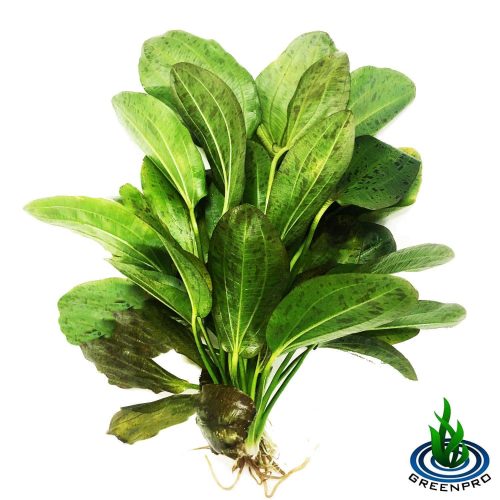
Amazon Swords often remind me of Aponogetons, only the Swords don’t have ruffled leaves.
Nevertheless, Amazon Swords do have fairly soft, oval shaped leaves that wave easily even in a mild water current. It is an attractive, tidy looking plant that does get quite tall, albeit slowly.
| Lighting | Low to medium |
| Water Temperature | 72 – 82 degrees Fahrenheit |
| Hardness | Soft to medium |
| pH | 6.5 – 7.5 |
| Rate of Growth | Slow |
Care Needs for these Live Plants for Betta Tanks
This plant usually requires iron supplementation to sustain even a slow rate of growth.
As with other aquatic plants, you can expect the leaves on Amazon Swords to be colonized by algae. Since this plant grows so slowly, you will need to wipe the leaves off instead of removing them.
Advantages
Even if the leaves grow past the water surface, the plant will continue to do fine. This can easily eliminate tank congestion problems and also create a leaf surface that male bettas might like to use for building bubble nests.
Final Thoughts
The need for iron fertilization can be a challenge in very small aquariums. It is still a good choice for betta tanks because it will still eliminate nitrates from the tank and rarely needs trimming.
>> Tap Here to Read More Reviews and See Today’s Price on Amazon.com <<
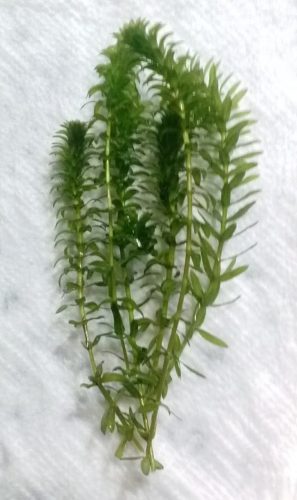
This plant produces light green stems with numerous pointy, translucent green leaves that stay close to the stem.
It is a fascinating plant that can be anchored into the substrate or left to float on the surface of the tank.
| Lighting | Moderate |
| Water Temperature | 59 – 82 degrees Fahrenheit |
| Hardness | Soft to medium |
| pH | 6.5 – 7.5 |
| Rate of Growth | Moderate to fast |
Care Needs
As a fast grower, Anacharis has a voracious appetite and may need both CO2 supplementation and additional broad range fertilizers.
Propagating this plant is very easy – all you have to do is break some of the plant away from the main stem and let it float in the water or stick it in the substrate.
Advantages
Even though Anacharis can reach 2’ tall, you can break off stems when they are just a few inches tall and place them in other parts of the betta tank, or put them in another aquarium.
It is also well known for removing nitrates from the tank and producing oxygen.
Final Thoughts
This plant can adapt well to smaller tanks, but is better suited to aquariums over 10 gallons in size.
You can use it readily enough in 1 gallon betta tanks, but you may need to replant often since it is not a good idea to use CO2 in small aquariums.
Aside from that, this plant gets a lower rating because it is considered an invasive species in many parts of the United States. Depending on where you live, there may be bans on purchasing and keeping this plant.
>> Tap Here to Read More Reviews and See Today’s Price on Amazon.com <<
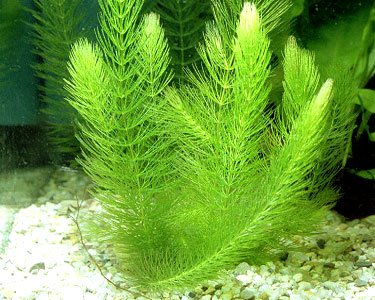
Overall, this plant looks just like a terrestrial evergreen tree. It will grow as a free floating plant or can be anchored in the substrate.
| Lighting | Medium |
| Water Temperature | 59 – 86 degrees Fahrenheit |
| Hardness | Soft to medium |
| pH | 6.0 – 7.5 |
| Rate of Growth | Very fast, may need weekly trimming |
Care Needs
Hornwort can grow very quickly, and also shed its leaves in a way that clogs filter inlets.
Advantages
This plant is well known for capturing and trapping algae and particles that make aquarium water look cloudy. It also produces toxins that will kill blue-green algae.
Final Thoughts
As with other plants that get a lower rating, this one also does better with CO2 supplementation. I have also noticed it is very inclined to shed if it it doesn’t have enough fertilizer.
If you are going to use it in a betta tank, having parent plants in a more optimal setting is a must.
>> Tap Here to Read More Reviews and See Today’s Price on Amazon.com <<
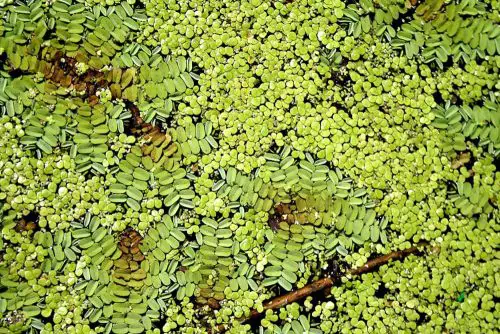
This plant produces tiny light green leaves that quickly propagate across the water surface.
If left to its own devices, the mat can become so thick it will block of air exchange at the water surface, which can suffocate fish, plants, and other creatures living in the water.
| Lighting | All |
| Water Temperature | 45 – 90, but will do best between 70 and 80 degrees Fahrenheit |
| Hardness | All |
| pH | 6.5 to 7.5 |
| Rate of Growth | Very fast |
Care Needs
Must be trimmed every 2 – 3 days, especially in small tanks.
Advantages
Patches of Duckweed make an ideal place for male bettas to build their bubble nests.
Final Thoughts
This plant grows easily in many water types, and is considered as an invasive species because of its impact on ponds and other environments. Insofar as home aquariums, it can easily spread from one tank to another.
It will still work in betta tanks as it does eliminate nitrates quickly and helps prevent algae growth.
>> Tap Here to Read More Reviews and See Today’s Price on Amazon.com <<
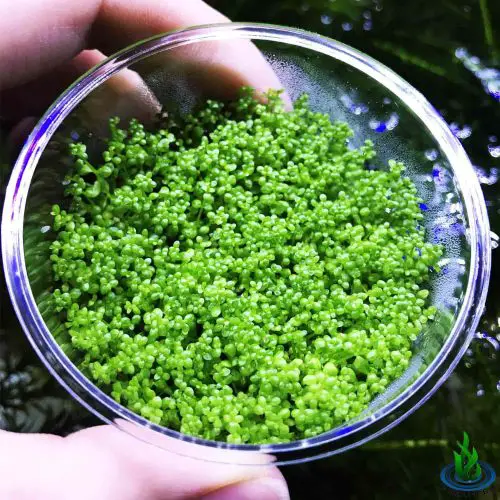
This carpet plant produces small, round green leaves that will spread quickly across the bottom of the tank.
| Lighting | Strong |
| Water Temperature | 68 – 82 degrees Fahrenheit |
| Hardness | Soft to medium |
| pH | 5.0 – 7.5 |
| Rate of Growth | Fast |
Care Needs
Rapid growth requires a lot of nutrients. It will need fertilizers and most likely CO2 injection.
Advantages
It will pair well with Marimo Moss balls, snails, and other creatures that will amuse bettas and create a healthy environment.
Final Thoughts
Although this plant doesn’t get very tall, the need for large amounts of fertilizers and CO2 can spell disaster in very small aquariums.
You can try using it in a betta tank without supplementation and see if it will simply grow slower in a less than optimal environment.
As with some other plants in this list, you may be well served by keeping a tank just for plants that will live a short term in non-optimal environments so that you always have new ones to add.
>> Tap Here to Read More Reviews and See Today’s Price on Amazon.com <<
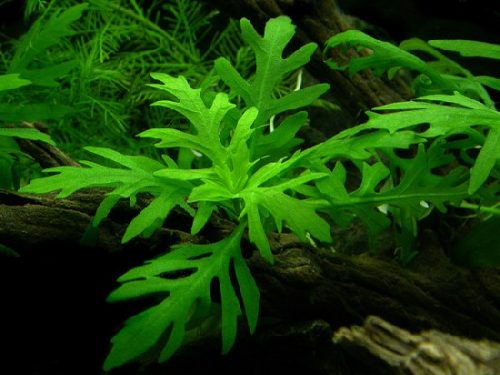
There are several different plants that go under the same name. Some look a bit like an evergreen bush, while others look more like a terrestrial mint plant.
Water Wisterias can be anchored in the substrate, or left floating in the tank water. If you leave them on the surface, they will produce long roots that eventually anchor in the substrate.
| Lighting | Moderate |
| Water Temperature | 74 – 82 degrees Fahrenheit |
| Hardness | Soft to medium |
| pH | 6.5 to 7.5 |
| Rate of Growth | Rapid |
Care Needs
Water Wisteria requires extra fertilizer, trace elements, CO2, and iron supplements. Since it grows quite large, you will have to trim it on a weekly or bi-weekly basis.
Advantages
As the roots grown downward from this plant, it provides a good bit of entertainment or bettas that will swim among the roots.
Final Thoughts
This plant receives the lowest rating on this list because it requires so many different supplements.
Author Note: Since this also includes CO2, you will more than likely have to keep parent plants in a bigger tank, and then add them as needed to smaller betta tanks.
>> Tap Here to Read More Reviews and See Today’s Price on Amazon.com <<
How to Keep Live Plants Healthy In Your Betta Tank
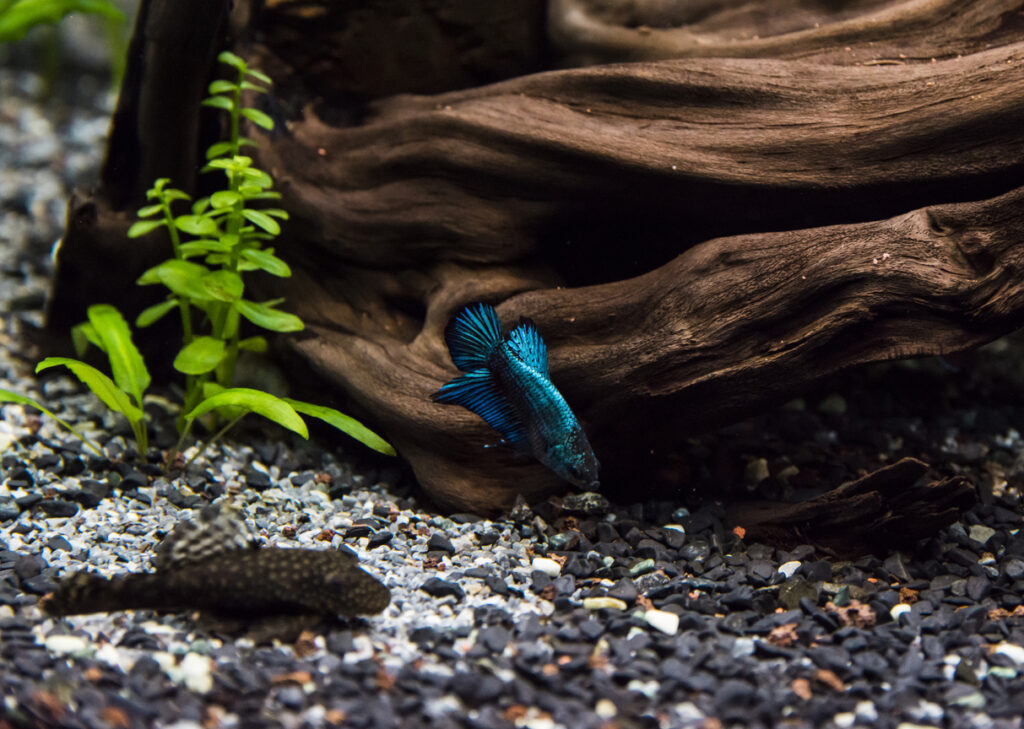
Keeping plants alive and healthy in smaller tanks can be a bit different from the procedures you would use in a larger one.
Here are the key differences that will apply to just about any plant you decide to keep in a betta tank:
- Over trimming may be more common in a betta tank – Since you are dealing with a smaller space to begin with, you may need to trim every 2- 3 weeks instead of letting it go for an entire month. Choosing plants that grow more slowly or have smaller profiles is vital if you expect the plants to live and thrive.
- You will need other animals to provide sufficient waste to feed plants – Snails, freshwater shrimp and other small creatures work well in the kind of small tanks that you are likely to use for housing a male betta.
- Even though bettas don’t eat plants, they can sometimes move gravel around or play with exposed roots – They may also decide to take a nap in larger plants. It is important to choose plants that can tolerate at least some disruption to their root system. Try to avoid plants with brittle leaves or stems that might break from bettas and their mischief.
Author Note: Other than these differences, keeping plants in a small tank is the same as what you would expect in larger tanks. Plants will still need lighting, Water Temperature, hardness, and pH within optimal ranges for their species.
How to Take Care of Those Best Live Plants for Betta Tanks
There are some things to keep in mind as you plant your betta tank.
Lighting Needs for Live Plants for Betta Tanks
Be sure to use full spectrum lighting for your aquarium plants. Your betta won’t be too happy about bright lights, but subdued LED lights in cool colors aren’t so bad.
Top Tip: Think blues, greens, and reds primarily, or, if you’ve got the cash, invest in a system that emulates light natural light cycles.
Substrate Needs for Live Plants for Betta Tanks
Bettas naturally thrive in subdued areas. This means that substrate should be subdued as well, but nutritious for the plants you keep.
Author Note: There are a variety of healthy nutrient-rich substrates. I’d recommend reading through our guide for the best substrates for planted tanks to ensure you get the right kind.
Benefits and Disadvantages of Live Plants for Betta Tanks
If you’re on the fence of whether to choose live or artificial plants for your betta tank, think about these pros and cons.
- Live plants are more appealing
- They provide nutrients for your fish
- Live plants provide some natural filtration.
- They also offer natural aeration.
- They help keep algae growth down.
There are some downsides, too, though, of course.
- Living plants require some maintenance. Fake plants just need occasional cleaning.
- Live plants require specific lighting that may not be your ideal.
- Live plants also need nutrient rich substrate which might not be as attractive as some of the choices you’d usually make.
Final Thoughts on Live Plants for Betta Tanks
Live plants are essential for creating a beautiful, healthy aquascape. While there are a number of challenges associated with keeping plants in betta tanks, these plants can help you create a tank that will be enjoyed by you and the betta that must live in it.
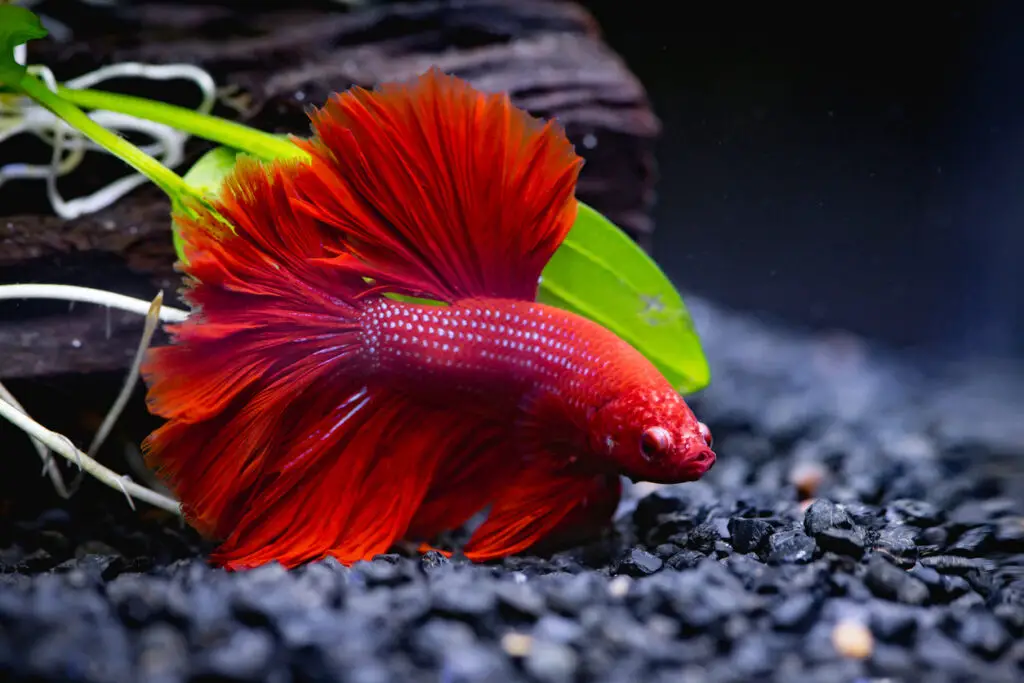
Love this site! Thanks for all the great info!